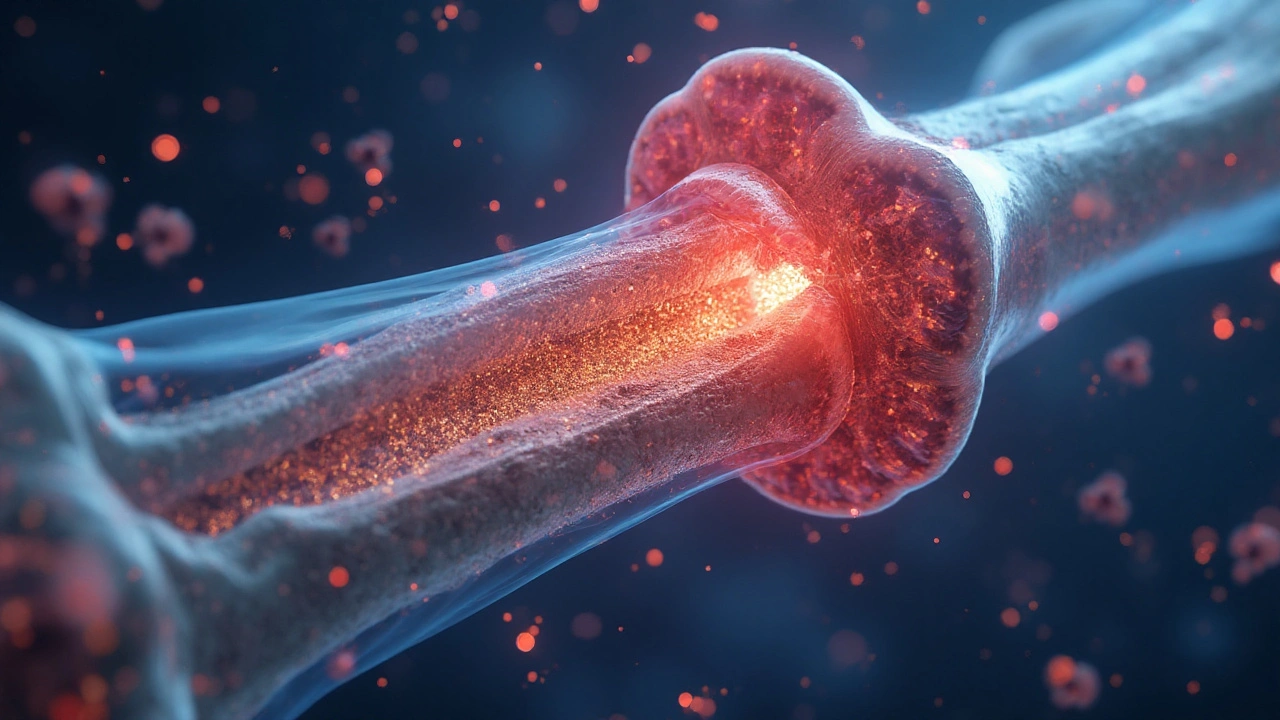Bone Loss Inflammation: What It Is and Why It Matters
When dealing with Bone Loss Inflammation, the harmful combination of chronic inflammation and accelerated bone degradation that can weaken your skeleton. Also known as osteolytic inflammation, it shows up when the body’s immune signals turn bone‑building cells off and bone‑eating cells on.
Key Players Behind the Process
One of the main drivers are inflammatory cytokines, signaling proteins such as TNF‑α, IL‑1, and IL‑6 that boost osteoclast activity. These molecules act like messengers that tell your bone tissue to break down faster than it can repair itself. When cytokine levels stay high for months or years, the balance tips toward loss, setting the stage for serious skeletal problems.
Another critical condition linked to this pattern is osteoporosis, a systemic decrease in bone density that makes fractures more likely. While osteoporosis can develop without overt inflammation, the presence of chronic inflammatory signals often speeds up the thinning of trabecular bone, especially in the spine and hip.
Autoimmune disorders, especially rheumatoid arthritis, a disease where joint inflammation spills over to affect bone and cartilage, illustrate the connection vividly. In RA, synovial tissue floods joints with cytokines, prompting local bone erosion and contributing to overall bone loss across the body.
Medications that suppress the immune system—or that are used to treat the very diseases that cause inflammation—can paradoxically worsen bone health. Glucocorticoids, steroid drugs commonly prescribed for asthma, autoimmune flare‑ups, and severe inflammation, are a prime example. They lower calcium absorption, increase kidney calcium loss, and directly stimulate osteoclasts, all of which amplify bone loss inflammation.
Understanding this web of cause and effect lets you take targeted steps. Reducing bone loss inflammation starts with controlling cytokine spikes—either through disease‑modifying antirheumatic drugs (DMARDs), biologic agents that block specific cytokines, or lifestyle tweaks that lower systemic inflammation. Adequate calcium and vitamin D intake, weight‑bearing exercise, and avoiding smoking are practical habits that boost bone formation and blunt resorption.
When steroids are unavoidable, doctors often add bisphosphonates or denosumab to protect the skeleton, and they monitor bone density with regular DEXA scans. For patients with rheumatoid arthritis, early initiation of biologics like TNF inhibitors not only eases joint pain but also dampens the cytokine surge that drives bone loss.
Below you’ll find a curated collection of articles that dive deeper into specific drugs, treatment comparisons, and practical advice. Whether you’re looking for how a particular medication impacts bone health or ways to manage inflammation without harming your skeleton, the posts that follow will give you clear, actionable information.

